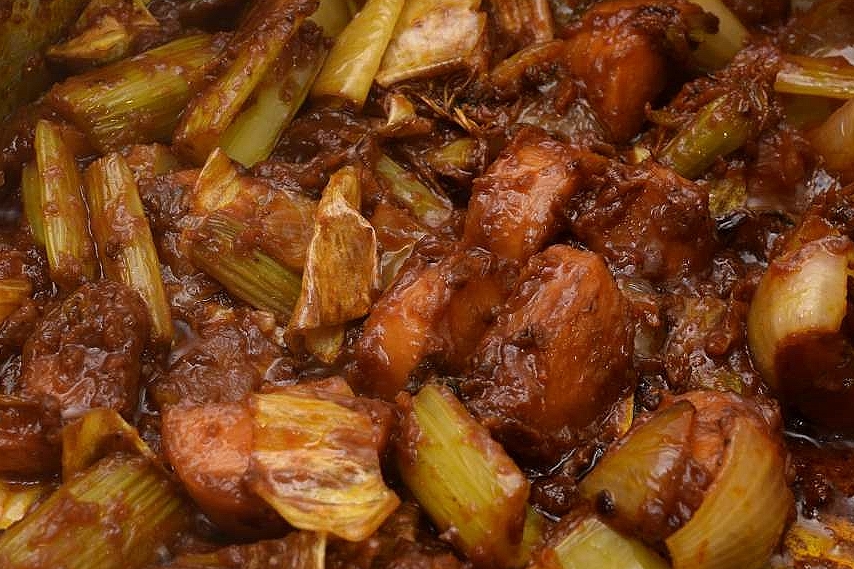Yield, 4 cups
Level of difficulty, 3
Stovetop Sauce Espagnole (sofrito)
Cut the carrots, celery and onions into 1″/3 cm pieces. Heat a skillet to 250 F/121 C and and add the vegetables. Listen for sizzling. A hissing sound means the pan is too cold. A popping sound means the pan is too hot.
 Stir as little as possible so as not to cool off the surface of the pan. The sizzling indicates that the carrots, celery and onions are caramelizing–approximately ten minutes, but don’t depend on a stopwatch. The results are clearly visible.
Stir as little as possible so as not to cool off the surface of the pan. The sizzling indicates that the carrots, celery and onions are caramelizing–approximately ten minutes, but don’t depend on a stopwatch. The results are clearly visible.
 Continue browning the vegetables until the vegetables are cooked through. Every time you add an ingredient to the pan, the surface temperature goes down. Use an infrared thermometer to monitor it, and try to keep it as close to 250 F/121 C as possible.
Continue browning the vegetables until the vegetables are cooked through. Every time you add an ingredient to the pan, the surface temperature goes down. Use an infrared thermometer to monitor it, and try to keep it as close to 250 F/121 C as possible.

Combine the tomato paste with half of the red wine and add to the skillet, stir to coat the vegetables.

Continue frying this mixture (sofrito) until a brown crust forms on the bottom of the pan–approximately ten minutes. The contents should be very thick and sticky. Add the rest of the wine and reduce again.
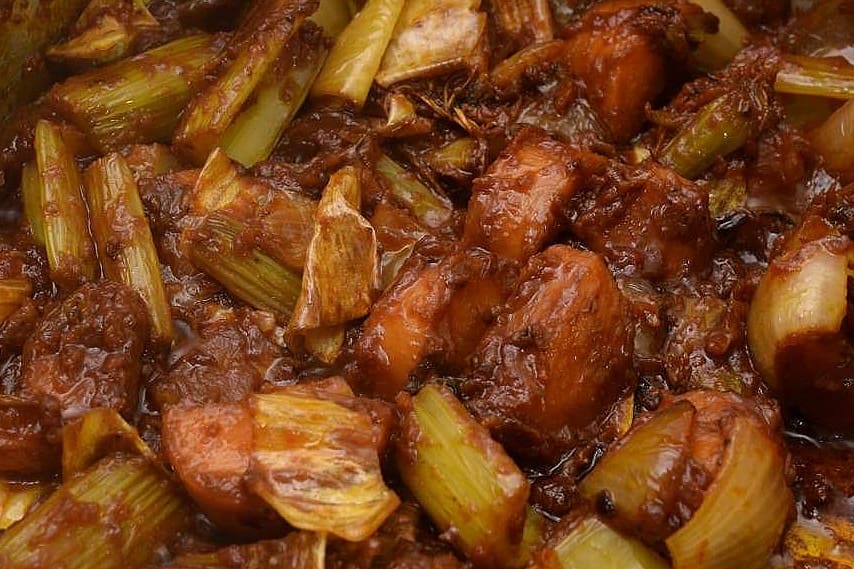 Reduce the heat if necessary, and cook until, well, until the tomato stops looking like ketchup!
Reduce the heat if necessary, and cook until, well, until the tomato stops looking like ketchup!

Add 2 quarts/2 liter of water to the pan, bring to a boil and reduce to a simmer.
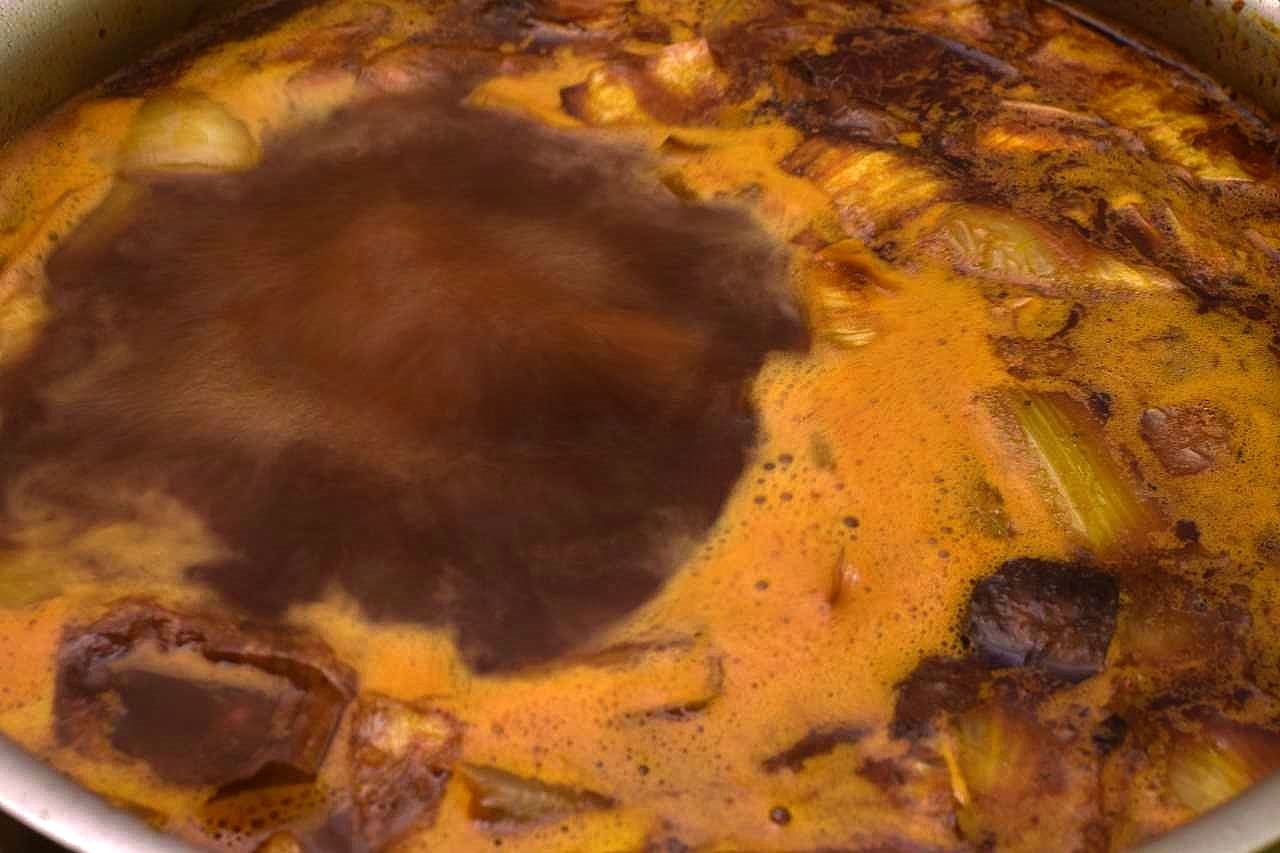
Simmer the sauce for at least one hour.

By the now the caramelized vegetables have released their color into the stock.
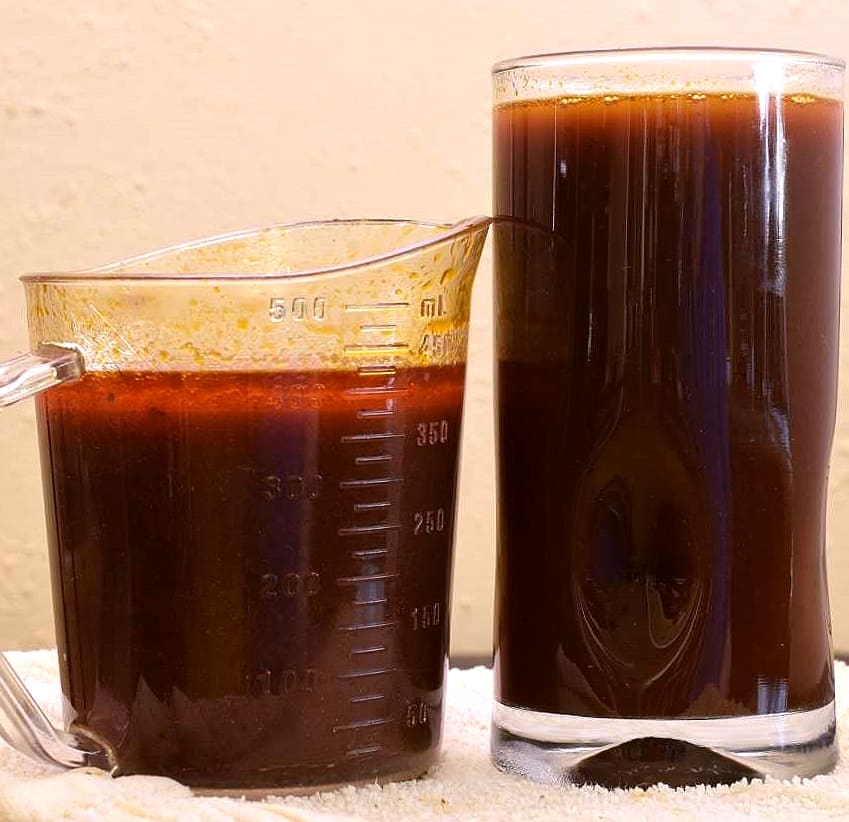
Strain the stock and allow to sit for a few minutes. The fat will float to the top. This can be carefully skimmed with a spoon or ladle, or refrigerated until the fat hardens–it can then be removed in one piece.
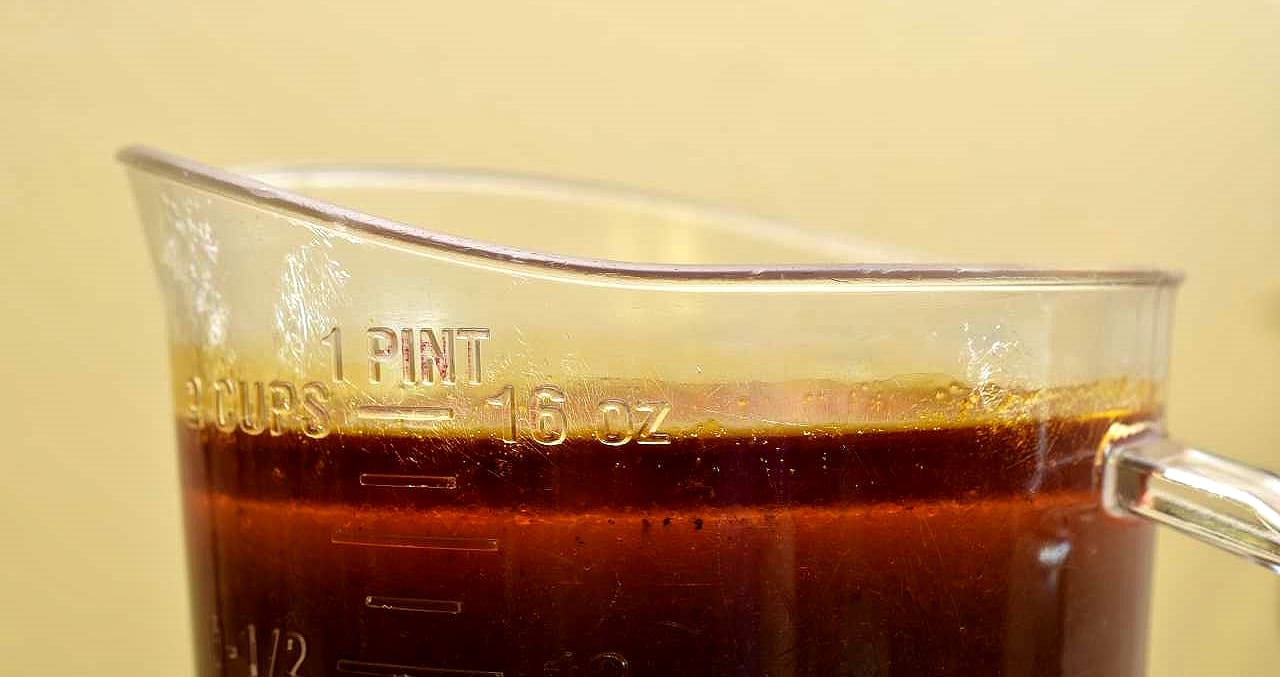
Once this process has been completed, the broth can be used as is in any recipe that requires brown stock. Seasoned appropriately and then thickened with a small amount of lightly cooked roux, it becomes vegetarian brown sauce/brown gravy. Un-thickened and reduced to one cup, it becomes a surprisingly convincing vegetable based demi-glace.
